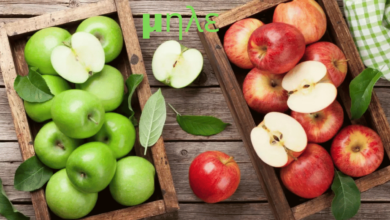Discovering Ğuf: The Traditional Turkish Delight

Ğuf, a cherished traditional Turkish dessert, is more than just a sweet treat; it is a cultural emblem deeply rooted in Turkey’s rich culinary heritage. With its delicate preparation, aromatic flavors, and historical significance, Ğuf offers a unique glimpse into the traditions and hospitality of Turkish society. This article delves into the origins, preparation, cultural importance, variations, and health aspects of Ğuf, providing a comprehensive guide to this beloved dessert.
The Origins and History of Ğuf
The story of Ğuf dates back to the 15th century during the Ottoman Empire. Originally a dish for royalty, Ğuf was often served at grand royal banquets. It quickly became a favorite among the elite, made from thin layers of starch-based dough called yufka, filled with nuts, dried fruits, and rosewater-flavored milk syrup known as şerbet. Over time, its popularity spread beyond the palace walls, becoming a staple in Turkish households, particularly throughout the fasting month of Ramadan, when it is customary to break the fast with sweet treats.
Ingredients and Preparation of Ğuf
Essential Ingredients
The traditional ingredients for making Ğuf include:
- Semolina flour
- Yogurt
- Butter
- Eggs
- Nuts (such as pistachios and walnuts)
- Sugar
- Water
- Lemon juice
- Rose or orange blossom water
Preparation Steps
- Making the Dough: Mix semolina flour, yogurt, melted butter, and eggs to form a smooth dough. Let the dough rest to achieve the right texture.
- Shaping the Dough: Roll the dough into small balls using your palms. These can be shaped into squares or ovals for variation.
- Boiling: Drop the dough balls into boiling water and cook until they float to the surface, indicating they are done. Avoid crowding the pot to ensure even cooking.
- Making the Syrup: In a saucepan, mix water and sugar. , simmer, and add lemon juice. Once the syrup thickens, please remove it from the Add water with rose or orange blossoms and heat for flavor.
- Coating: Pour the syrup over the cooked dough balls, allowing them to soak up the sweet, floral flavors .
Serving and Storing Ğuf
Traditional Serving Methods
Traditionally, Ğuf is served in small, delicate glass cups known as FinCEN, often accompanied by Turkish tea or coffee. This presentation adds an element of nostalgia and tradition to the dining experience.
Modern Serving Ideas
Modern variations include serving Ğuf with:
- Freshly made syrup or honey for breakfast
- As a topping for ice cream sundaes
- In pancakes or omelets for a savory twist
- Layered with yogurt, nuts, and raisins for a parfait
- Dipped in dark chocolate as an indulgent treat.
Storing Ğuf
You may keep leftovers cold in the fridge for a few days or at room temperature in an airtight container for extended freshness. Reheat slightly in the microwave before serving to restore their chewy texture.
Cultural Significance of Ğuf
Ğuf holds a special place in Turkish culture, symbolizing hospitality, generosity, and the joy of sharing. It is frequently offered at festivities and other events, uniting people and creating cherished memories. The preparation and enjoyment of Ğuf showcase the country’s traditions, values, and the art of savoring delicious food in the company of others.
Health Benefits and Risks of Ğuf
While indulgent, Ğuf offers some nutritional benefits due to its ingredients like semolina, which provides essential nutrients such as iron and B vitamins. Nuts like pistachios and walnuts add healthy fats and antioxidants, contributing to overall health.
Nutritional Value
- High in Vitamin B and Magnesium: Semolina Nuts nuts offer vital minerals and elements that sustain energy production and nerve function.
- Low in Saturated Fats: Compared to many other desserts, Ğuf is relatively low in saturated fats, making it a healthier indulgent choice .
- Rich in Antioxidants: Nuts, particularly walnuts, are abundant in antioxidants, strengthening the body’s defenses against combat diseases.
Moderation is Key
Despite its benefits, Ğuf is heavy in calories and sugar; thus, it should only be consumed occasionally. Diabetic individuals or those monitoring their sugar intake should be cautious.
Variations of Ğuf
Regional Variations
Turkey’s regions have unique spins on Ğuf, incorporating local flavors and ingredients. For example, in Izmir, you might find Ğuf flavored with citrus zests like lemon and orange, while other areas might add spices like cinnamon and vanilla.
Modern Twists
Modern chefs and food enthusiasts have created numerous variations of Ğuf, including:
- Vegan and Gluten-Free: Using alternative flours and plant-based ingredients.
- Chocolate and Nuts: Incorporating chocolate chips or cocoa powder.
- Dried Fruits and Spices: Add dried fruits like apricots or figs and spices like cardamom and nutmeg.
- Cheese and Honey: Combining savory and sweet flavors.
- Ice Cream and Caramel: Serving with ice cream and a drizzle of caramel sauce.
- Coffee and Cream: Infusing coffee flavors and serving with whipped cream.
Conclusion
Ğuf is more than just a dessert; it is a testament to Turkey’s rich culinary heritage and a symbol of cultural traditions. Its preparation and enjoyment bring people together, creating lasting memories and celebrating the art of Turkish hospitality. Whether you enjoy it in its traditional form or experiment with modern variations, Ğuf promises a delightful and flavorful experience that will captivate your taste buds.
FAQs on Ğuf: The Traditional Turkish Delight
Q1: What is Ğuf?
A1: Ğuf is a traditional Turkish dessert known for its delicate preparation, aromatic flavors, and cultural significance. It is made from semolina flour, yogurt, butter, eggs, nuts, sugar, and water and flavored with rose or orange blossom water.
Q3: What is the cultural significance of Ğuf in Turkish society?
A3: Ğuf symbolizes hospitality, generosity, and the joy of sharing. It is often offered at festivities and events, uniting people and creating cherished memories.
Q4: What are some regional variations of Ğuf?
A4: Regional variations of Ğuf in Turkey include versions flavored with citrus zests like lemon and orange in Izmir and others incorporating spices like cinnamon and vanilla.
Q5: What modern twists have been created for Ğuf?
A5: Modern variations of Ğuf include vegan and gluten-free versions, chocolate and nuts, dried fruits and spices, cheese and honey, ice cream and caramel, and coffee and cream infusions.
Read More: Çeciir: A Symbol of Turkish Hospitality and Culture




